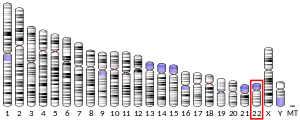| APOBEC3B | |||||||||||||||||||||||||||||||||||||||||||||||||||
|---|---|---|---|---|---|---|---|---|---|---|---|---|---|---|---|---|---|---|---|---|---|---|---|---|---|---|---|---|---|---|---|---|---|---|---|---|---|---|---|---|---|---|---|---|---|---|---|---|---|---|---|
| |||||||||||||||||||||||||||||||||||||||||||||||||||
| Identifiers | |||||||||||||||||||||||||||||||||||||||||||||||||||
| Aliases | APOBEC3B, A3B, APOBEC1L, ARCD3, ARP4, DJ742C19.2, PHRBNL, bK150C2.2, apolipoprotein B mRNA editing enzyme catalytic subunit 3B | ||||||||||||||||||||||||||||||||||||||||||||||||||
| External IDs | OMIM: 607110 MGI: 1933111 HomoloGene: 105420 GeneCards: APOBEC3B | ||||||||||||||||||||||||||||||||||||||||||||||||||
| |||||||||||||||||||||||||||||||||||||||||||||||||||
| |||||||||||||||||||||||||||||||||||||||||||||||||||
| |||||||||||||||||||||||||||||||||||||||||||||||||||
| |||||||||||||||||||||||||||||||||||||||||||||||||||
| |||||||||||||||||||||||||||||||||||||||||||||||||||
| Wikidata | |||||||||||||||||||||||||||||||||||||||||||||||||||
| |||||||||||||||||||||||||||||||||||||||||||||||||||
Probable DNA dC->dU-editing enzyme APOBEC-3B is a protein that in humans is encoded by the APOBEC3B gene.[5][6][7]
This gene is a member of the cytidine deaminase gene family. It is one of seven related genes or pseudogenes found in a cluster, thought to result from gene duplication, on chromosome 22. Members of the cluster encode proteins that are structurally and functionally related to the C to U RNA-editing cytidine deaminase APOBEC1. It is thought that the proteins may be RNA editing enzymes and have roles in growth or cell cycle control. This gene along with APOBEC3A have been in recent years found associated with mutagenesis of several cancers. The APOBEC3A and APOBEC3B proteins can cause specific mutations in cancer genomes called APOBEC mutagenesis and several factors including genetic and environmental influence this mutation pattern among patients specifically in bladder and breast cancer.[7] This gene is also overexpressed in multiple myeloma, possibly aiding its formation.[8]
References
- 1 2 3 GRCh38: Ensembl release 89: ENSG00000179750 - Ensembl, May 2017
- 1 2 3 GRCm38: Ensembl release 89: ENSMUSG00000009585 - Ensembl, May 2017
- ↑ "Human PubMed Reference:". National Center for Biotechnology Information, U.S. National Library of Medicine.
- ↑ "Mouse PubMed Reference:". National Center for Biotechnology Information, U.S. National Library of Medicine.
- ↑ Jarmuz A, Chester A, Bayliss J, Gisbourne J, Dunham I, Scott J, Navaratnam N (Feb 2002). "An anthropoid-specific locus of orphan C to U RNA-editing enzymes on chromosome 22". Genomics. 79 (3): 285–96. doi:10.1006/geno.2002.6718. PMID 11863358.
- ↑ Madsen P, Anant S, Rasmussen HH, Gromov P, Vorum H, Dumanski JP, Tommerup N, Collins JE, Wright CL, Dunham I, MacGinnitie AJ, Davidson NO, Celis JE (Sep 1999). "Psoriasis upregulated phorbolin-1 shares structural but not functional similarity to the mRNA-editing protein apobec-1". J Invest Dermatol. 113 (2): 162–9. doi:10.1046/j.1523-1747.1999.00682.x. PMID 10469298.
- 1 2 "Entrez Gene: APOBEC3B apolipoprotein B mRNA editing enzyme, catalytic polypeptide-like 3B".
- ↑ Yamazaki, Hiroyuki; Shirakawa, Kotaro; Matsumoto, Tadahiko; Hirabayashi, Shigeki; Murakawa, Yasuhiro; Kobayashi, Masayuki; Sarca, Anamaria Daniela; Kazuma, Yasuhiro; Matsui, Hiroyuki; Maruyama, Wataru; Fukuda, Hirofumi; Shirakawa, Ryutaro; Shindo, Keisuke; Ri, Masaki; Iida, Shinsuke; Takaori-Kondo, Akifumi (9 May 2019). "Endogenous APOBEC3B Overexpression Constitutively Generates DNA Substitutions and Deletions in Myeloma Cells". Scientific Reports. 9 (1): 7122. Bibcode:2019NatSR...9.7122Y. doi:10.1038/s41598-019-43575-y. PMC 6509214. PMID 31073151.
External links
- Human APOBEC3B genome location and APOBEC3B gene details page in the UCSC Genome Browser.
Further reading
- Wedekind JE, Dance GS, Sowden MP, Smith HC (2003). "Messenger RNA editing in mammals: new members of the APOBEC family seeking roles in the family business". Trends Genet. 19 (4): 207–16. doi:10.1016/S0168-9525(03)00054-4. PMID 12683974.
- Dunham I, Shimizu N, Roe BA, et al. (1999). "The DNA sequence of human chromosome 22". Nature. 402 (6761): 489–95. Bibcode:1999Natur.402..489D. doi:10.1038/990031. PMID 10591208.
- Strausberg RL, Feingold EA, Grouse LH, et al. (2003). "Generation and initial analysis of more than 15,000 full-length human and mouse cDNA sequences". Proc. Natl. Acad. Sci. U.S.A. 99 (26): 16899–903. Bibcode:2002PNAS...9916899M. doi:10.1073/pnas.242603899. PMC 139241. PMID 12477932.
- Mariani R, Chen D, Schröfelbauer B, et al. (2003). "Species-specific exclusion of APOBEC3G from HIV-1 virions by Vif". Cell. 114 (1): 21–31. doi:10.1016/S0092-8674(03)00515-4. PMID 12859895.
- Sawyer SL, Emerman M, Malik HS (2006). "Ancient Adaptive Evolution of the Primate Antiviral DNA-Editing Enzyme APOBEC3G". PLOS Biol. 2 (9): E275. doi:10.1371/journal.pbio.0020275. PMC 479043. PMID 15269786.
- Yu Q, Chen D, König R, et al. (2005). "APOBEC3B and APOBEC3C are potent inhibitors of simian immunodeficiency virus replication". J. Biol. Chem. 279 (51): 53379–86. doi:10.1074/jbc.M408802200. PMID 15466872.
- Gerhard DS, Wagner L, Feingold EA, et al. (2004). "The Status, Quality, and Expansion of the NIH Full-Length cDNA Project: The Mammalian Gene Collection (MGC)". Genome Res. 14 (10B): 2121–7. doi:10.1101/gr.2596504. PMC 528928. PMID 15489334.
- Rose KM, Marin M, Kozak SL, Kabat D (2005). "Regulated production and anti-HIV type 1 activities of cytidine deaminases APOBEC3B, 3F, and 3G". AIDS Res. Hum. Retroviruses. 21 (7): 611–9. doi:10.1089/aid.2005.21.611. PMID 16060832.
- Bogerd HP, Wiegand HL, Doehle BP, et al. (2006). "APOBEC3A and APOBEC3B are potent inhibitors of LTR-retrotransposon function in human cells". Nucleic Acids Res. 34 (1): 89–95. doi:10.1093/nar/gkj416. PMC 1326241. PMID 16407327.
- Stenglein MD, Harris RS (2006). "APOBEC3B and APOBEC3F inhibit L1 retrotransposition by a DNA deamination-independent mechanism". J. Biol. Chem. 281 (25): 16837–41. doi:10.1074/jbc.M602367200. PMID 16648136.
- Hakata Y, Landau NR (2007). "Reversed functional organization of mouse and human APOBEC3 cytidine deaminase domains". J. Biol. Chem. 281 (48): 36624–31. doi:10.1074/jbc.M604980200. PMID 17020885.
- Kidd JM, Newman TL, Tuzun E, et al. (2007). "Population Stratification of a Common APOBEC Gene Deletion Polymorphism". PLOS Genet. 3 (4): e63. doi:10.1371/journal.pgen.0030063. PMC 1853121. PMID 17447845.
- An APOBEC cytidine deaminase mutagenesis pattern is widespread in human cancers
Steven A Roberts, Michael S Lawrence, Leszek J Klimczak, Sara A Grimm, David Fargo, Petar Stojanov, Adam Kiezun, Gregory V Kryukov, Scott L Carter, Gordon Saksena, Shawn Harris, Ruchir R Shah, Michael A Resnick, Gad Getz & Dmitry A Gordenin
- Candace D Middlebrooks, A Rouf Banday, Konichi Matsuda, et al. Association of germline variants in the APOBEC3 region with cancer risk and enrichment with APOBEC-signature mutations in tumors Exit Disclaimer. Nature Genetics 2016.




